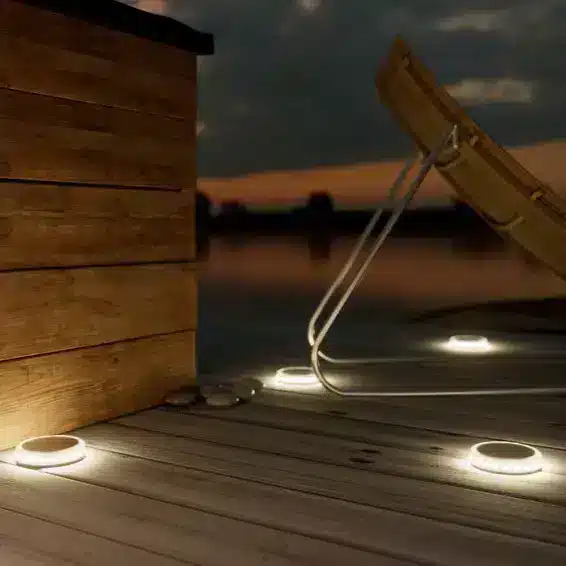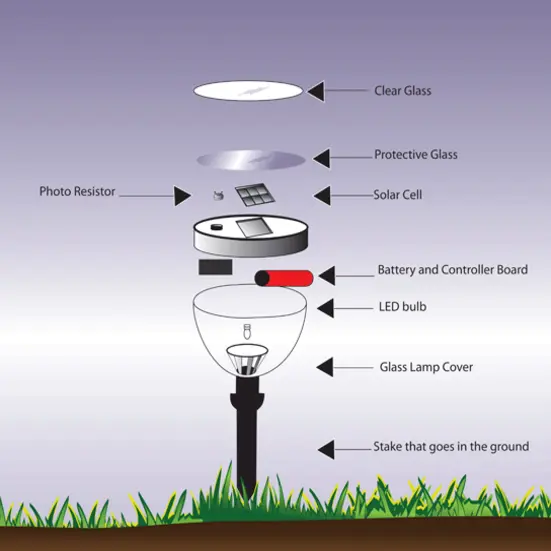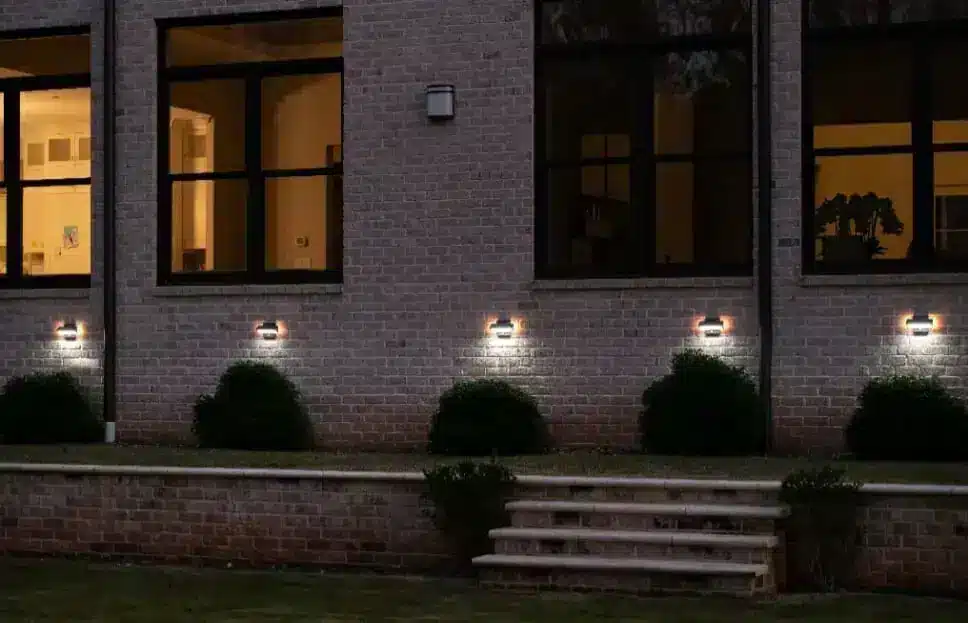
Are you ready for a fascinating journey into the future of energy? Join me as we explore the intriguing world of Solar Lighting and discover the innovative technology behind it. From dazzling science to practical applications, we’ll delve deep into the ingenuity of harnessing the sun’s energy. So buckle up, and let’s embark on an adventure of discovery together!
Like many people, I initially viewed solar lighting as just another eco-friendly alternative to traditional electrical lights. But as I started digging deeper into this technology, I discovered an ingenious interplay of science and engineering that transforms sunlight into usable electricity. It piqued my curiosity, setting me off on a journey to better understand the technology behind solar lighting.
Grasping the Basics: Photovoltaics and Solar Energy

The central technology behind solar lighting is photovoltaics. It’s a process that converts light—specifically sunlight—into electricity. Photovoltaic cells, better known as solar cells, are the heart of this process. These cells are made of semiconductor materials like silicon, which can absorb light and generate electricity.
When sunlight strikes a solar cell, it excites the electrons within the semiconductor material, causing them to move. This movement creates an electric current, which we can then use. Multiple solar cells are connected to form a solar panel, increasing the electricity generated.
While not new, it is only in recent decades that solar technology has become a viable alternative for large-scale power production and smaller-scale applications like solar lighting, thanks partly to increased environmental awareness and the rising costs of fossil fuels.
It’s also worth noting that even though the core technology isn’t new, innovations continue to emerge. For instance, developments in solar panel efficiency, battery storage, and the integration of solar power into smart grid systems are ongoing, making solar energy an exciting and rapidly-evolving field.
Components of a Solar Light: Understanding the Roles
A solar lighting system is more than just a solar panel. The system also includes a rechargeable battery, a controller, and a light fixture.

- The rechargeable battery stores the electricity the solar panel generates during the day. It’s critical because it allows the solar light to function even when the sun isn’t shining, such as during night-time or on cloudy days.
- The controller regulates the power flow from the solar panel to the battery, preventing overcharging and ensuring longevity. Some controllers are even sophisticated enough to detect the level of ambient light, turning the solar light on when it gets dark and off again at dawn.
- Lastly, the light fixture is where the stored electrical energy becomes usable light. Modern solar lights typically use LEDs (Light Emitting Diodes) because they’re energy-efficient and have a long lifespan.
Going Deeper: Technological Advancements in Solar Lighting
Technology never stands still, and this is true for solar lighting. Researchers continually explore new materials and designs to make solar lights more efficient, durable, and affordable. For instance, the development of perovskite solar cells represents a significant leap forward, offering comparable or even better efficiency than traditional silicon-based cells but at a potentially lower cost.
Light Up Your Nights: Exploring the Spectrum of Outdoor Solar Lighting Options

| Type of Solar Light | Application |
|---|---|
| Solar-Powered Flood Lights | A practical choice when there’s a requirement for intense illumination. Solar-powered flood lights work great for flagpoles, commercial signs, and large structure illumination. |
| Solar Spotlights | Outdoor solar spotlights are ideal for numerous outdoor locations around your home. They become a popular choice when finding power outlets for all these lights, mainly if they are far from your house, which can be challenging. |
| Solar Motion Lights | A cost-effective and easy way to light up a dark outdoor area briefly and serve as a robust deterrent, solar motion lights add a layer of security. |
| Solar-Powered Post Lights | They are an excellent option when it comes to enhancing an outdoor area with lighting. Unlike conventional post lights that necessitate complex underground wiring, solar post lamps don’t need any wiring. Simply put together the light post, secure it to the ground, and it’s good to go! |
| Solar Street Lights | They are an excellent option for enhancing an outdoor area with lighting. Unlike conventional post lights that necessitate complex underground wiring, solar post lamps don’t need any wiring. Simply put together the light post, secure it to the ground, and it’s good to go! |
Frequently Asked Questions: Harnessing the Sun’s Power with Solar Lighting
Solar lighting harnesses the power of the sun to provide illumination. Solar panels absorb sunlight and convert it into electricity. This energy is then stored in a battery for use when the sun goes down, providing a sustainable and renewable light source.
Solar lights are a fantastic green alternative to traditional lighting. They reduce reliance on fossil fuels, lower electricity bills, and require less maintenance. Plus, they’re a breeze to install—no wiring needed!
Yes! Solar lights will still charge on overcast days, albeit less efficiently. And in winter, while the daylight hours are reduced, they can still capture enough sunlight to function. Just ensure they’re not covered in snow!
There’s a solar light for every need. From solar floodlights for high-intensity illumination and motion sensor lights for security to decorative solar lanterns, spotlights, and solar street lights for pathways and parking lots. The options are as limitless as the sun itself!
Solar lights can typically last 4-12 hours on a full charge. The exact duration depends on the model, battery capacity, and the amount of sunlight received during the day.
Solar lights generally last a few years, but much depends on the battery, which may need replacement over time. The LED bulbs themselves can last for up to 10 years!
Solar lights are pretty low maintenance! You’ll need to clean the solar panels occasionally to ensure they can absorb sunlight effectively. Battery replacement may be necessary every few years.
Absolutely! While the brightness of solar lights was an issue in their early days, advancements in LED and solar technology now allow solar lights to provide brightness comparable to their electric counterparts.
Yes, as long as the solar panel gets enough sunlight. Some models have a separate solar panel to place outside while the light fixture stays indoors.
Not at all! One of the biggest perks of solar lights is their ease of installation. Most solar lights are standalone and can be installed in a jiffy; no electrician is required.
Remember, the sun never sends a bill. Make the switch to solar lighting today and brighten your nights the eco-friendly way!
My Personal Experience with the Benefits of Solar Lighting
When I switched to solar lighting, I wasn’t entirely sure what to expect. I knew it was a more sustainable choice, but I wanted to know if the benefits would outweigh the initial investment. The advantages are manifold now that I’ve been using solar lights for a while.
Eco-Friendly Energy Source
First and foremost, solar lights are incredibly eco-friendly. They harness the power of the sun—a renewable energy source that doesn’t deplete our planet’s resources or contribute to climate change. I love knowing that my decision to use solar lights helps to reduce my carbon footprint.
Energy Savings
Then there are the energy savings. Once installed, solar lights use zero electricity. This has led to a noticeable decrease in my monthly energy bills. While there was an upfront cost, the lights are already starting to pay for themselves through these savings.
Ease of Installation
One of my favorite benefits of solar lighting is how easy the lights are to install. There were no electrical wires to worry about, and I didn’t have to hire an electrician. I chose a sunny spot, and within minutes, I had a new light source in my yard.
Low Maintenance
Solar lights require very little maintenance. Besides occasional cleaning and rare battery replacement, these lights are essentially ‘set and forget.’ It’s a big contrast to the hassle I previously had with changing burnt-out bulbs and troubleshooting wiring issues with my traditional outdoor lights.
Versatility and Safety
Lastly, I’ve found that solar lights offer great versatility. I’ve used solar path lights, spotlights, and even solar string lights for my patio. Each one provides adequate, reliable lighting without the risk of electrical shock or the need to access mains power.
Having switched to solar lighting, I’m confident I made the right decision. I’m not only saving money and reducing my carbon footprint but also adding functionality and aesthetic appeal to my outdoor spaces with minimal effort.
In Conclusion: Appreciating the Bright Side of Solar Lighting
After my deep dive into solar lighting technology, I gained not just knowledge but a deep appreciation for the inventiveness and ingenuity of human beings. We’ve devised a way to capture the energy from our nearest star and use it to illuminate our nights, all while reducing our dependence on fossil fuels. Solar lighting is a beautiful blend of science, technology, and environmental stewardship, and I’m excited to see where this technology goes next.
Solar lighting is low-maintenance and cost-effective in the long run, making it a fantastic investment for those who not only want to save money but also want to make a positive impact on the world. So, let’s join hands and take the first step toward a greener future!
Note from the editor: This post was initially published in July 2021 but has been extensively rewritten and revised for accuracy and consistency.

